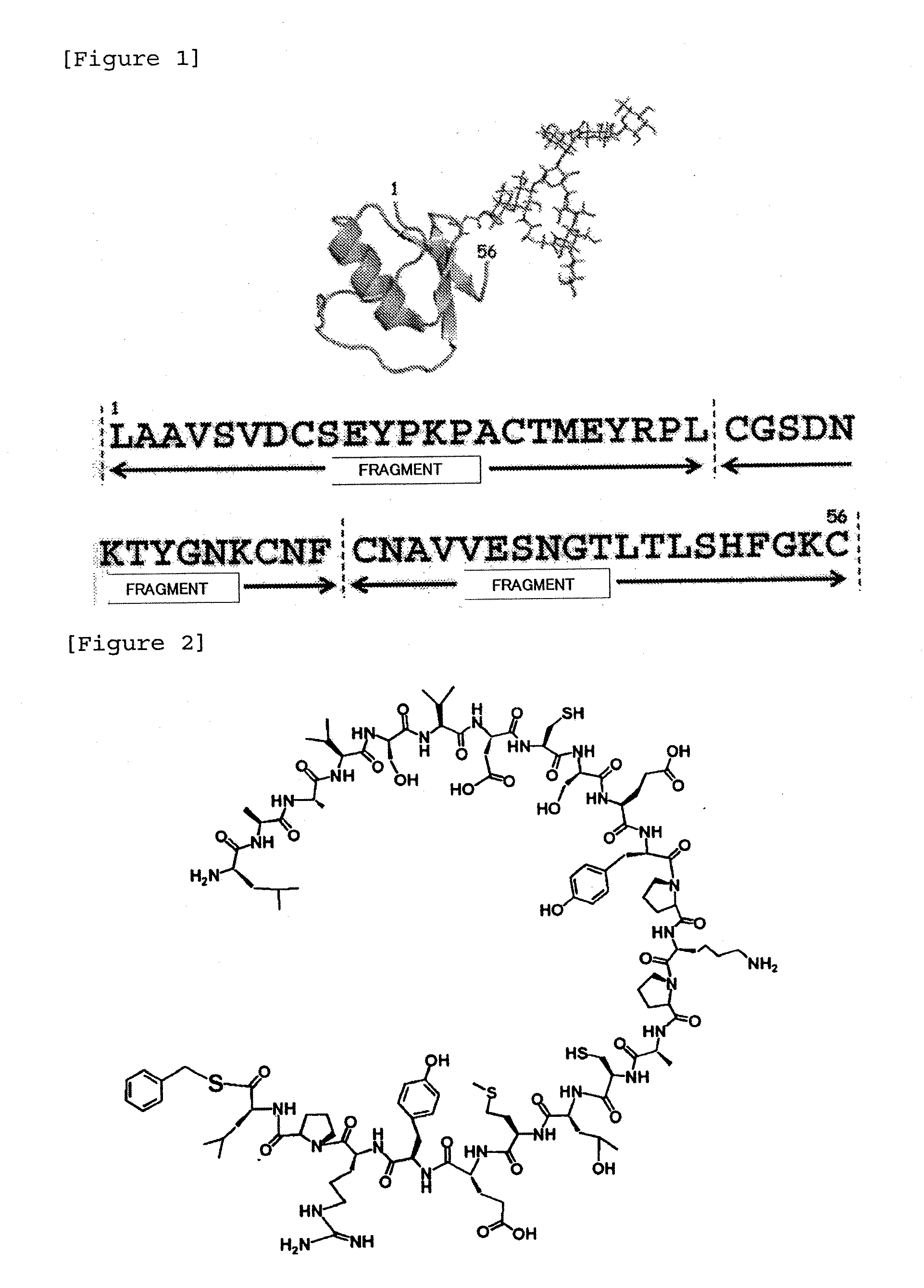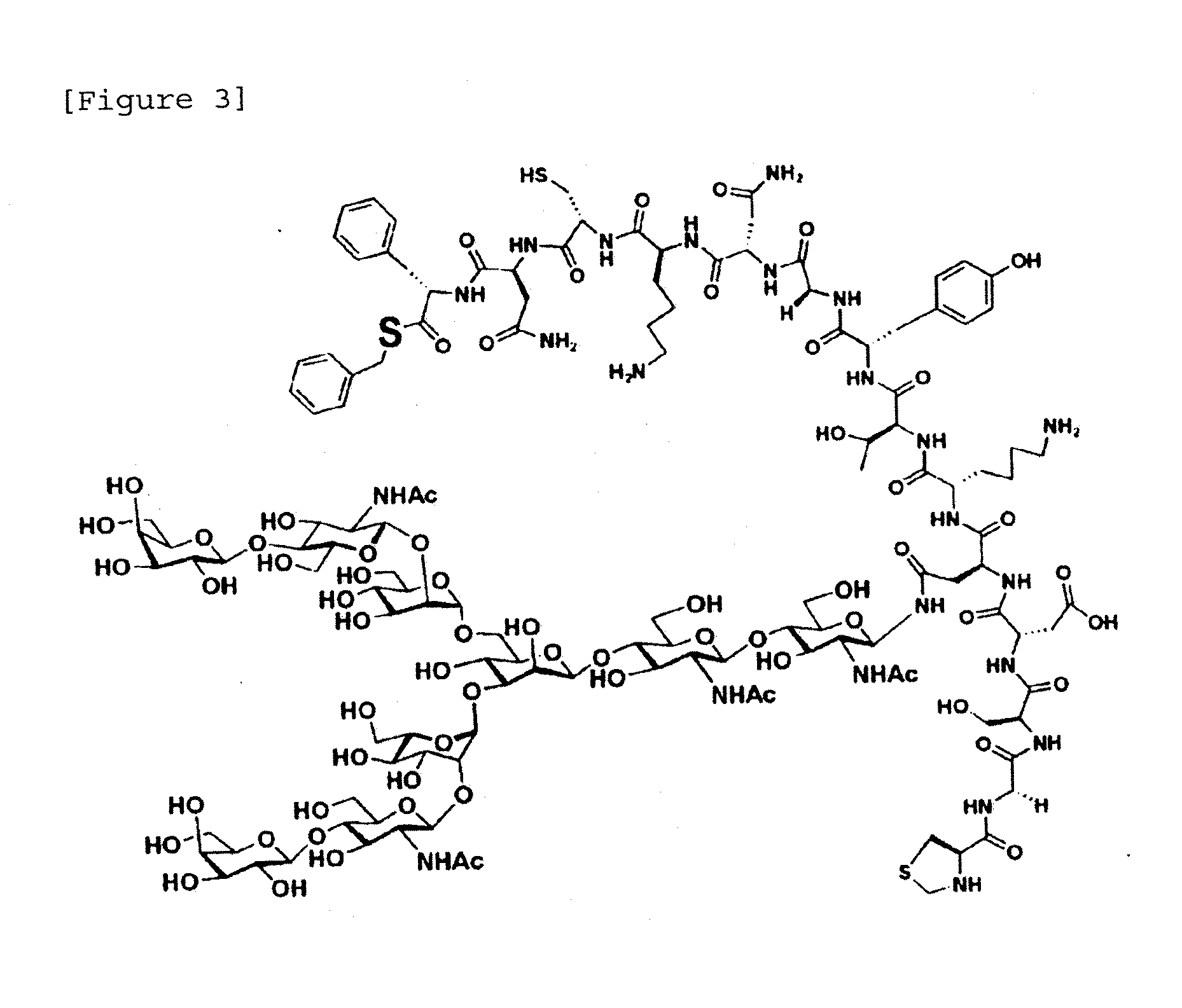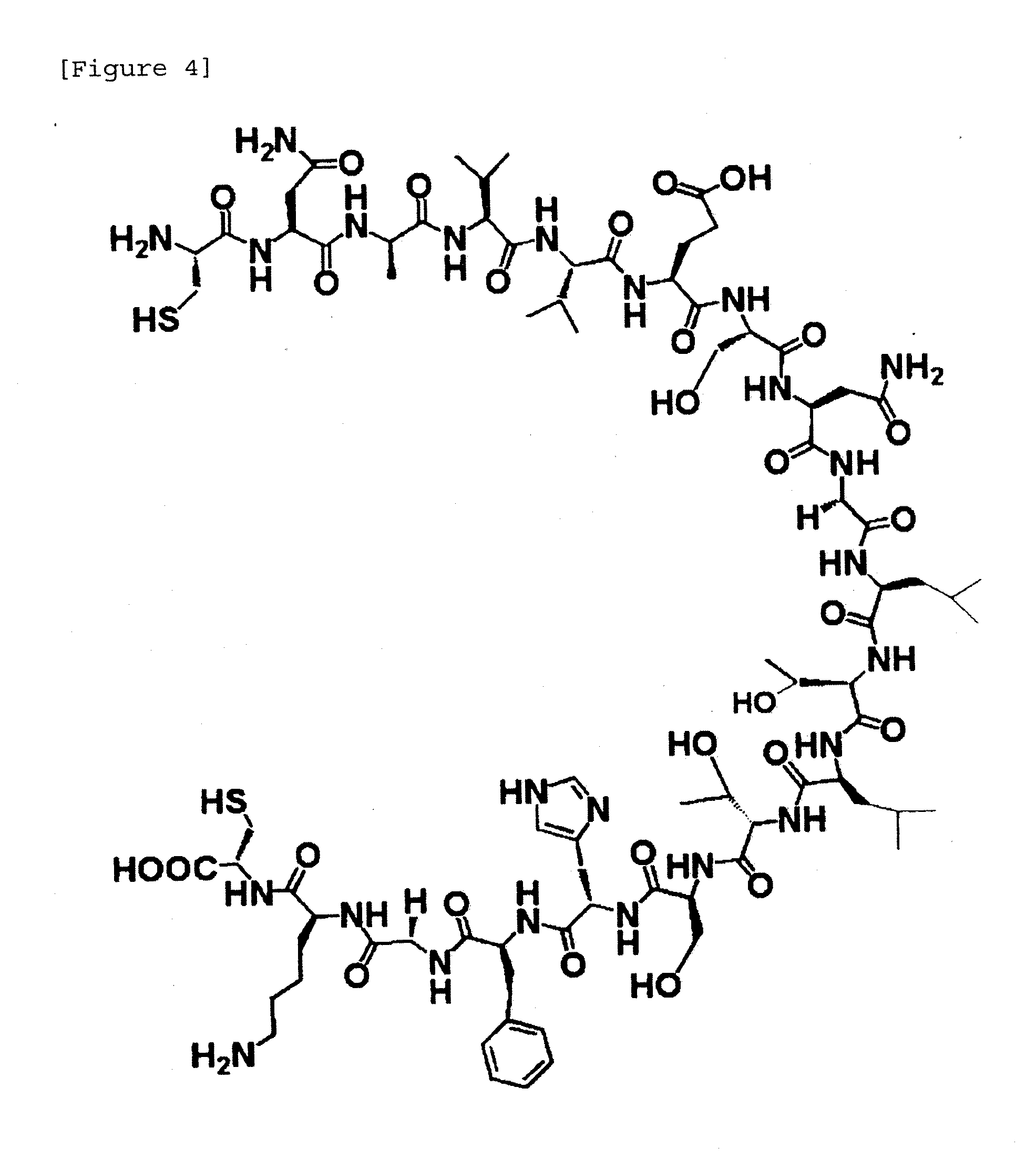Glycoprotein production method and screening method
a glycoprotein and production method technology, applied in the field of glycoprotein production, can solve the problems of inability to exhibit a sufficient physiological activity, difficult to uniformly apply modification and trimming after addition of sugar chains, and inability to add uniform sugar chains. achieve the effect of uniform sugar chain structure and higher order structur
- Summary
- Abstract
- Description
- Claims
- Application Information
AI Technical Summary
Benefits of technology
Problems solved by technology
Method used
Image
Examples
example 1
Chemical Synthesis of the Third Domain of Silver Pheasant Ovomucoid (Hereinafter, May be Referred to as OMSVP3)
1. Chemical Synthesis of the Third Domain of Silver Pheasant Ovomucoid Having Uniform Amino Acid Sequence and Sugar Chain
[0183]Three fragments as shown in FIG. 1 were each synthesized and then ligated by NCL to synthesize a third domain of silver pheasant ovomucoid having uniform amino acid sequence and sugar chain. Fragments 1 to 3 are shown in FIGS. 2 to 4.
[Instruments Used]
[0184]1H-NMR was measured by AVANCE 600 (shown as 600 MHz) of Bruker Corporation. For the ESI mass spectrum measurement, Esquire 3000 plus. of Brucker Daltonics Corporation was used.
[0185]For the CD spectrum measurement, J-820 and J-805 of JASCO Corporation were used.
[0186]As a RP-HPLC analytical instrument, one manufactured by Waters Corporation, and as a UV detector, Waters 486, a photodiode array detector (Waters 2996), and Waters 2487, all were manufactured by Waters Corporation, and as a column, C...
example 2
Measurement of the Physiological Activity
[Measurement of the Physiological Activity of Glycosylated OMSVP3 (Fractions A to D)]
[0244]An enzyme solution of a 0.1 M phosphate buffer (pH=8.0, containing 0.01% α-chymotrypsin and 0.01% bovine serum albumin) and a substrate solution of a 0.1 M phosphate buffer (pH=8.0, containing 517 μM of a 14-residue peptide having a protecting group synthesized in Reference Example 1 (to be described later) (SEQ ID NO:16) and 0.01% bovine serum albumin) were prepared, and 20 μL of each solution was transferred to an Eppendorf tube. Separately, each of the Fractions A to D obtained in Example 1 was lyophilized and dissolved in 0.1 M phosphate buffer (pH=8.0, containing 0.01% bovine serum albumin), and OD280 of each resulting solution was measured to prepare sample solutions of constant protein concentration. Then, 20 μL of each sample solution was added to the solution prepared as above and the inhibitory activity was measured. In this experiment, the fi...
example 3
Measurement of the Physiological Activity (Calculation of IC50)
[Calculation of IC50 of Glycosylated OMSVP3]
[0246]The 14-residue peptide having a protecting group synthesized in Reference Example 1 (to be described later) (SEQ ID NO:16) (1.5 mg) was dissolved in 1 mL of a 0.1 M phosphate buffer (pH 8.0, containing 0.1 mg / mL BSA) to prepare a 1 mM solution. The solution thus obtained was diluted to 0.34 mM using an absorption spectrometer (solution 1). Chymotrypsin (1 mg) was dissolved in 1 mL of a 0.1 M phosphate buffer (pH 8.0, containing 0.1 mg / mL BSA). The resulting solution was diluted 10-fold, and further diluted 10-fold. The above operation was repeated so that a solution of 0.2 μg / mL was prepared (solution 2). Fraction B was dissolved in 100 μL of a 0.1 M phosphate buffer (pH 8.0, containing 0.1 mg / mL BSA), and the solution thus obtained was diluted to 65 nM using an absorption spectrometer. The resulting solution was diluted to prepare solutions of 58.5 nM, 52 nM, 45.5 nM, 39...
PUM
| Property | Measurement | Unit |
|---|---|---|
| wavelength | aaaaa | aaaaa |
| resistance | aaaaa | aaaaa |
| concentrations | aaaaa | aaaaa |
Abstract
Description
Claims
Application Information
 Login to View More
Login to View More - R&D
- Intellectual Property
- Life Sciences
- Materials
- Tech Scout
- Unparalleled Data Quality
- Higher Quality Content
- 60% Fewer Hallucinations
Browse by: Latest US Patents, China's latest patents, Technical Efficacy Thesaurus, Application Domain, Technology Topic, Popular Technical Reports.
© 2025 PatSnap. All rights reserved.Legal|Privacy policy|Modern Slavery Act Transparency Statement|Sitemap|About US| Contact US: help@patsnap.com



